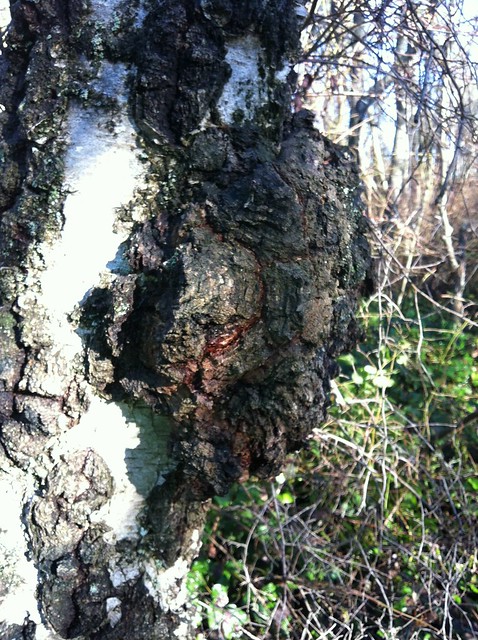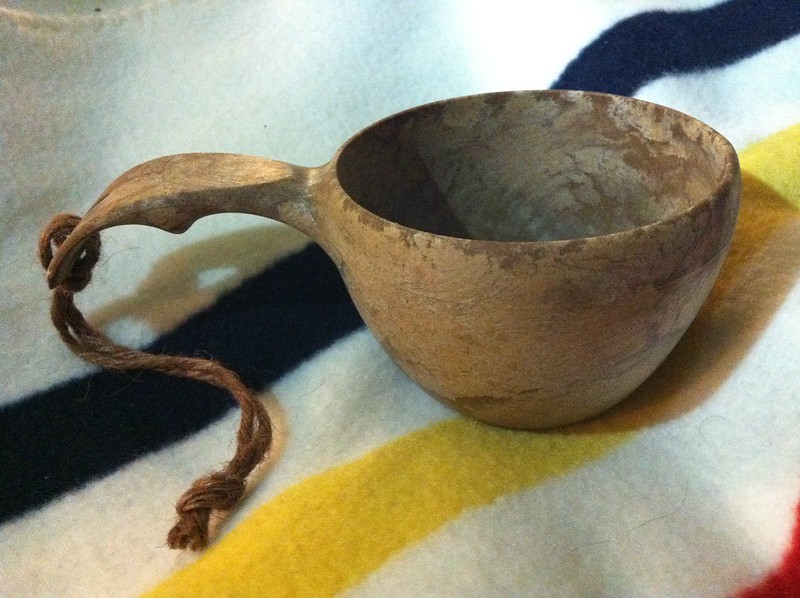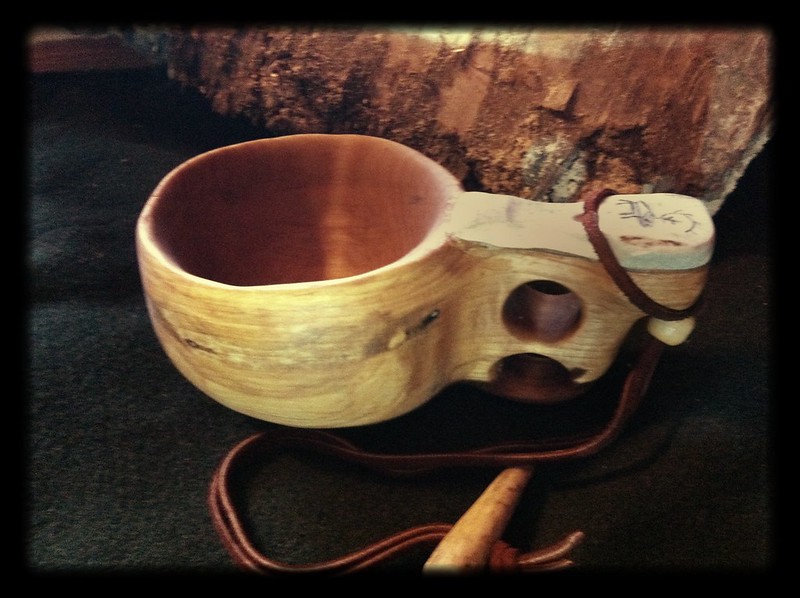A kuksa (guksi or kasa) is a traditional handicrafted cup carved out of the burl of a birch tree by the Sami or Laplander people of northern Scandinavia. The Sami believe that traditionally, you should either carve your own or receive one as a gift. A kuksa should last you a lifetime. The kuksa has been adopted by bushcrafters not only for its aesthetics, function, and its origin in the forest but because it is a natural progression in carving skills to craft one after completing the carving of a spoon. The tools and skills needed to carve a kuksa are exactly the same as for the spoon. All you need is a saw, hatchet, carving knife and a crooked knife.
 | ||
| A cook spoon I carved from the fallen branch of a cedar tree. |
After a long search for a burl, I found one (which I at first mistook for chaga).
 | |
| Birch burl |
I wanted to keep this kuksa as authentic as I could so I added deer antler to the handle. The antler was supplied by a fellow bushcrafter and I can't believe how hard the material was to shape! I also etched a crude Sami symbol for reindeer into it, my first attempt at scrimshaw! After my initial scare with cracking, I was afraid to try curing the kuksa in the tradional way by boiling it for several hours in salt water so instead I went with rubbing it with mineral oil. The mineral oil makes it safe to drink out of, protects it from rot, and brings out the grain. Here are a few pictures of my completed kuksa.
For someone interested in a kuksa but not motivated to carve their own, there is a new product gaining popularity with backpackers and bushcrafters alike. Kupilka, a Finnish company, makes a a lightweight kuksa. called the "Kupilka 21", out of a natural fiber composite consisting 50% of pine and 50% plastic. At only 3.5oz, it is dishwasher safe and biodegradable.
 |
| Kupilka 21. |


